It’s always important to regularly care for your furniture but with luxury purchases, proper care is essential to prolong the life of your home investment. No matter the material that your luxury furniture is made of, we’re here to provide you with essential tips and tricks on how to ensure that your furniture will remain in tip-top shape while lasting for many years to come.
The Importance of Regular Maintenance
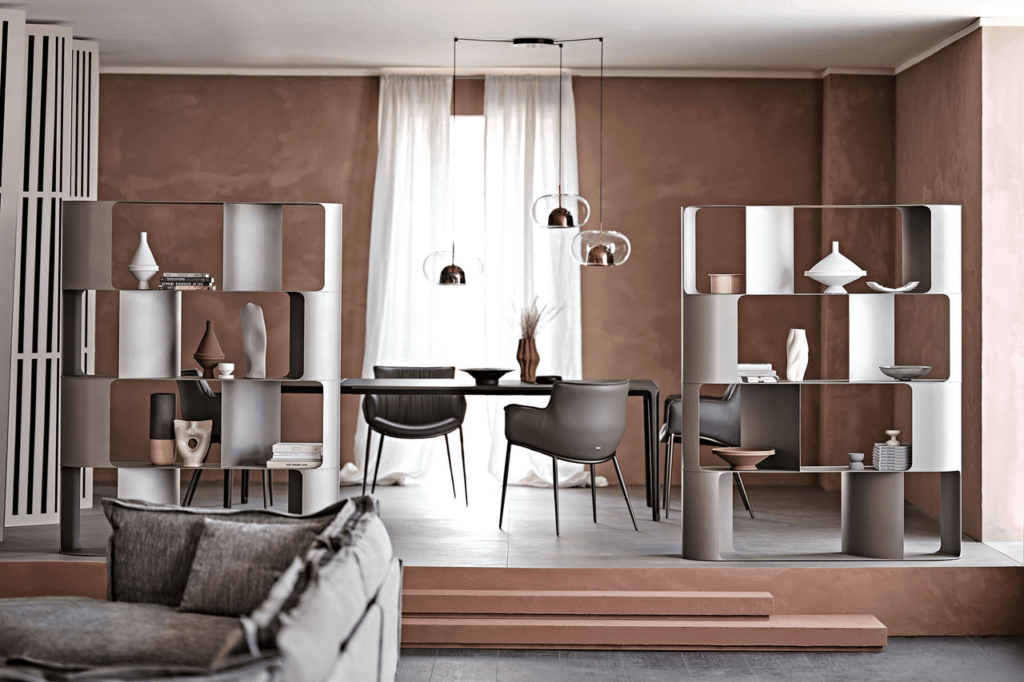
It’s important to know how to care for your luxury furniture pieces, but it’s also important to know why you should be regularly doing so. By dedicating time and effort to care for your luxury furniture, you can enjoy its beauty, comfort, and value even longer.
Preserving aesthetic appeal. Luxury furniture is often crafted with exquisite materials and finishes, making its appearance a significant aspect of its value. Regular maintenance helps maintain its original beauty, preventing wear and tear, fading, discoloration, or damage caused by dust, dirt, or spills. By keeping the furniture clean and well-maintained, you can ensure that it continues to enhance the overall aesthetic appeal of your space.
Extending lifespan. Luxury furniture is built to last but still requires proper care to ensure longevity. Regular maintenance, including cleaning, polishing, and addressing any minor repairs, helps prevent small issues from escalating into more significant problems. By investing time and effort in maintenance, you can extend the lifespan of your luxury furniture.
Protecting investment. Luxury furniture often represents a significant investment, and its value can appreciate over time. Regular maintenance is essential for protecting this investment. Well-maintained furniture is less likely to experience significant damage or deterioration, preserving its value and potentially allowing for higher resale or appraisal values in the future.
Upholding functionality. Luxury furniture is not only about its visual appearance; it should also provide comfort and functionality. Regular maintenance ensures that the furniture remains in optimal working condition. This includes checking and repairing mechanisms, such as reclining features, drawers, or hinges, to ensure they operate smoothly and efficiently. By keeping the furniture functional, you can continue to enjoy its intended purpose and maximize your comfort.
Health and hygiene. Regular maintenance of luxury furniture contributes to a healthier living environment. Dust, allergens, and bacteria can accumulate on furniture surfaces, upholstery, or within crevices. Regular cleaning and maintenance can help eliminate these contaminants, promoting better indoor air quality and reducing the risk of allergies or respiratory issues. Additionally, prompt attention to spills or stains prevents them from setting or causing permanent damage, maintaining a hygienic and clean living space.
Peace of mind. Luxury furniture is often associated with a sense of pride and satisfaction. By regularly maintaining your furniture, you gain peace of mind, knowing that you are taking care of your investment and ensuring its continued beauty and functionality. This peace of mind allows you to fully enjoy your furniture without the worry of neglect or potential damage.
Different Furniture Materials & How to Care for Them

Caring for luxury furniture materials requires specific approaches based on their unique characteristics. If possible, always follow the manufacturer’s instructions to care for your luxury furniture. Here’s a guide on how to care for different types of luxury furniture materials:
WOOD FURNITURE
- Dusting: Regularly dust wooden furniture with a soft cloth or a microfiber duster to remove loose dirt and other particles.
- Cleaning: Use a mild wood cleaner or a mixture of water and gentle dish soap to clean the surfaces. Wipe with a damp cloth and dry immediately to prevent moisture damage.
- Polishing: Apply a high-quality wood polish or wax to nourish and protect the wood of your luxury furniture.
- Prevent moisture damage: Avoid placing wet items directly on wood surfaces and use coasters and placemats to protect against spills and heat damage.
- Address scratches: Use touch-up markers or wood fillers to repair minor scratches. For deeper scratches or damages, consult a professional for repairs or refinishing.
LEATHER UPHOLSTERY
- Dusting: Regularly dust leather furniture using a soft, dry cloth or a vacuum cleaner with a soft brush attachment.
- Cleaning: Wipe leather with a slightly damp cloth to remove stains or spills. Use a mild leather cleaner specifically formulated for the type of leather and follow the product’s instructions.
- Conditioning: Apply a leather conditioner or moisturizer to keep the leather supple and prevent drying and cracking. Follow the manufacturer’s instructions for application frequency.
- Avoid direct sunlight and heat sources: Place leather furniture away from direct sunlight or heat sources to prevent fading, drying, and cracking.
- Address stains promptly: Quickly clean up spills or stains using a clean cloth or sponge. Blot the area gently without rubbing.
- Professional maintenance: Consider professional leather cleaning and conditioning periodically to maintain the leather’s quality and appearance.
FABRIC UPHOLSTERY
- Vacuuming: Regularly vacuum fabric upholstery using a brush attachment to remove dust, dirt, and debris.
- Spot cleaning: Address stains or spills promptly by blotting the affected area with a clean cloth and using a mild fabric cleaner or upholstery cleaner recommended for that fabric type.
- Rotate cushions: Regularly rotate or flip cushions to distribute wear and maintain evenness in appearance.
- Avoid excessive moisture: Use caution when using water-based cleaners on fabric upholstery to prevent over-wetting and potential damage.
- Professional cleaning: Consider professional upholstery cleaning for deep cleaning and stubborn stain removal.
METAL FURNITURE
- Dusting: Regularly dust metal furniture with a soft cloth or a feather duster to remove loose dirt and debris.
- Cleaning: Wipe metal surfaces with a damp cloth and a mild soapy water solution. Dry thoroughly to prevent water spots or rust formation.
- Polishing: Apply a metal polish or stainless-steel cleaner to maintain the shine and remove tarnish or fingerprints. Follow the product’s instructions for the best results.
- Protect against scratches: Use coasters or placemats to prevent scratches from items placed on metal surfaces. Avoid abrasive cleaners or scrub brushes that may damage the finish.
- Check for rust: Regularly inspect metal furniture for signs of rust. If rust is present, remove it using a rust remover and touch up the affected area with the appropriate paint or finish.
GLASS FURNITURE
- Cleaning: Use a glass cleaner or a mixture of water and vinegar to clean glass surfaces. Wipe with a lint-free cloth or paper towel for streak-free results.
- Handle with care: Avoid placing heavy or sharp objects on glass surfaces that may cause scratches or cracks.
- Protect the edges: Apply edge protectors or bumper guards to minimize the risk of chipping or cracking at the edges.
- Avoid extreme temperature changes: Do not expose glass furniture to sudden temperature changes, as it may cause the glass to crack or shatter.
- Avoid abrasive cleaners: Use non-abrasive cleaners to prevent scratching the glass surface. Avoid using rough sponges or scrub brushes.
Cleaning Tips & Tricks for Luxury Furniture
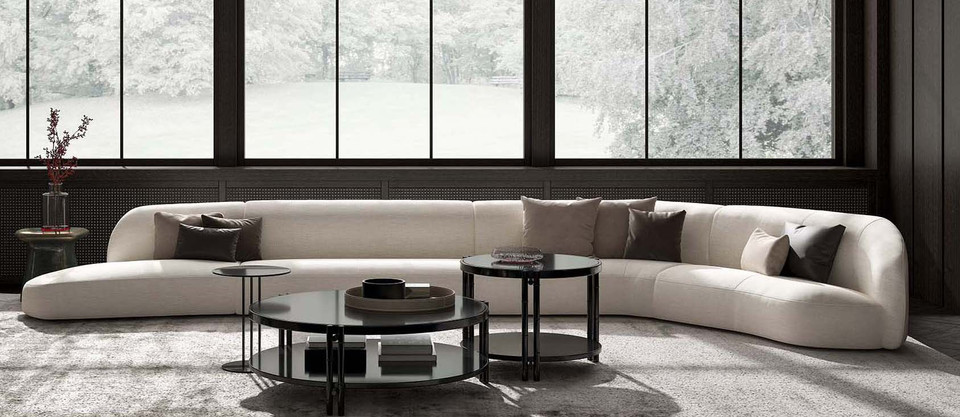
Proper cleaning is a given with any type of furniture that you have but with luxury furniture, sometimes it’s best to go beyond the norm to ensure the quality and longevity of your product. Keep reading for some helpful tips and tricks on how to care for your luxury furniture.
It’s always important to follow the manufacturer’s instructions if possible. This will provide you with a detailed guide on how to care for your product and whether there are specific solutions or techniques that you need to use. If you’re unsure of what type of cleaning solution to use, always test your cleaning solution in a small, inconspicuous area. This test helps ensure that the cleaner doesn’t cause any adverse effects like discoloration or damage.
Always opt for mild, non-abrasive cleaners unless told otherwise. Avoid harsh chemicals, bleach, ammonia, or abrasive cleaners, as they can damage the finish or upholstery.
Be sure and dust regularly and address spills immediately. This will ensure that your product is looking and feeling its best, while also avoiding any scratches, discoloration, or general wear and tear over time.
If your furniture features fabric upholstery, take the time to vacuum it to remove any dust and debris. If it’s leather, clean it using a damp cloth or sponge and a mild soap specifically designed for leather. Gently wipe the leather surface without saturating it with water. After cleaning, use a leather conditioner to moisturize and maintain the leather’s suppleness.
Polish your wood furniture. To maintain the luster of wood furniture, use a high-quality wood polish or a mixture of equal parts vinegar and olive oil. Apply a small amount of the polish to a soft cloth and gently buff the wood in the direction of the grain. This helps to remove fingerprints and smudges and restores the shine.
Remember, always follow the manufacturer’s guidelines, and test any cleaning products or methods in hidden areas before applying them to the rest of the surface. With regular cleaning and proper care, your luxury furniture will maintain its beauty and longevity and look brand new, even after many years of use.
How to Prevent Damage & Prolong Lifespan

To prevent damage and prolong the lifespan of your luxury furniture, consider the following maintenance practices:
Regular cleaning. Dust and debris can accumulate on furniture surfaces, leading to scratches and deterioration. Dust your furniture regularly using a soft, lint-free cloth or a feather duster. For more thorough cleaning, use a mild, non-abrasive cleaner suitable for the specific material of your furniture, following the manufacturer’s instructions. Avoid using harsh chemicals or abrasive cleaners that can cause damage.
Protection from sunlight. Direct sunlight can cause fading, discoloration, and deterioration of furniture finishes and fabrics. Position your luxury furniture away from sunlight if possible or use window treatments like blinds, curtains, or UV-protective films to limit exposure. Additionally, consider rotating or rearranging your furniture periodically to ensure even exposure to sunlight.
Avoid excessive moisture. Excessive moisture can warp wood, cause stains, or lead to mold and mildew growth. Clean up spills promptly using a soft, absorbent cloth. Use coasters, placemats, or tablecloths to protect surfaces from moisture and heat. Consider using a dehumidifier in humid environments to control moisture levels.
Use furniture protectors. To prevent scratches, dents, or gouges, use furniture protectors such as felt pads or rubber stoppers on the legs or base of your furniture. This helps minimize friction and prevents direct contact between your furniture and the floor.
Upholstery care. If your luxury furniture has upholstered surfaces, take extra care to maintain them. Vacuum upholstery regularly using a soft brush attachment to remove dust and debris. Address spills and stains immediately by blotting with a clean cloth, avoiding rubbing, which can spread the stain. For deeper cleaning, consult the manufacturer’s guidelines if possible or consider professional upholstery cleaning services.
Handle with care. When moving or repositioning luxury furniture, avoid dragging or pushing it across the floor, as it can damage the legs or scratch the surface. Instead, lift the furniture using proper techniques or use furniture sliders to minimize friction.
Regular inspections. Periodically inspect your luxury furniture for any signs of damage, loose joints, or wear and tear. Address any minor issues promptly to prevent them from worsening. Tighten any loose screws or bolts, repair minor scratches or dents, and address any structural concerns as soon as you notice them.
Follow the manufacturer’s guidelines. In some cases, Cantoni will provide you with a product manual for the purchase of your luxury item. Always refer to the manufacturer’s care instructions and guidelines that are specific to your luxury furniture. These guidelines provide valuable information on cleaning methods, recommended products, and any specific maintenance requirements for your furniture.
Professional maintenance. Consider professional maintenance services for your luxury furniture. Professional cleaners or restoration experts can provide deep cleaning, refinishing, or repairs that require specialized knowledge and equipment. These services can help revitalize your furniture and address any significant damage or wear.
By implementing these preventative measures and investing in regular maintenance, you can protect your luxury furniture, prolong its lifespan, and ensure its continued beauty and functionality for years to come.
How to Deal with Common Furniture Issues
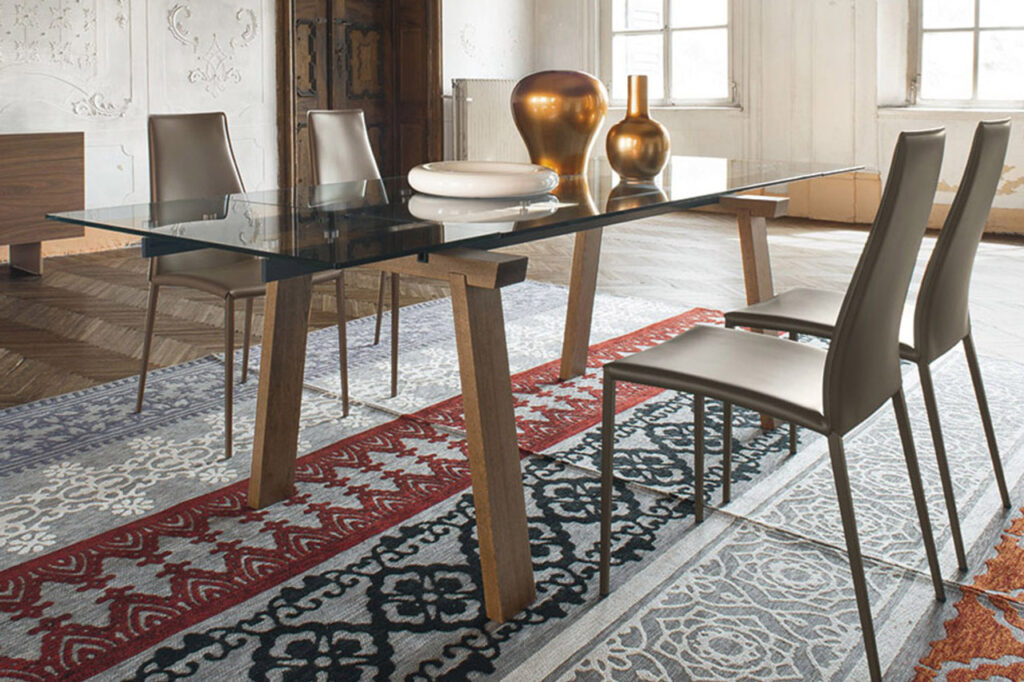
We hope that this article will help you maintain your luxury furniture in the best condition possible, however, it is common to experience some minor issues every once in a while. But there’s nothing to worry about, we’re here to provide you with some insight into common problems that you may encounter and how to deal with them without any outside assistance.
Scratches. Minor scratches on wooden furniture can be addressed by using a furniture touch-up marker or crayon that matches the color of the wood. Apply the marker or crayon to the scratch and then gently buff the area with a soft cloth. For deeper scratches, you may need to use a filler or consult a professional furniture repair service.
Water rings. Water rings can appear when a wet object is placed directly on a wooden surface. To remove light water rings, consult your product’s manufacturer’s instructions to ensure you’re using the right products suitable for your furniture’s materials.
Stains. Stains on upholstery or fabric can be challenging to remove, but prompt action can help minimize the damage. Blot the stain gently with a clean cloth or paper towel to absorb as much of the spill as possible. Avoid rubbing, as it can spread the stain. For specific types of stains, you may need to use a specialized stain remover or consult professional upholstery cleaning services.
Loose joints. Over time, furniture joints can become loose or wobbly. To tighten loose joints, use a screwdriver or appropriate tool to tighten any screws or bolts that secure the joint. If the joint continues to be loose, consider using wood glue or adhesive specifically designed for furniture repair. Apply the adhesive to the joint, secure it tightly, and allow it to dry according to the manufacturer’s instructions.
Worn upholstery. With regular use, upholstery can become worn or develop areas of thinning fabric. To prolong the life of worn upholstery, consider using furniture covers or throws to protect the fabric. If the wear is significant or affects the comfort and appearance of the furniture, you may need to consider reupholstering or replacing the upholstery altogether.
Dents. Dents in certain materials, like wood, can be minimized by using steam or moisture. Place a damp cloth over the dent and apply heat using an iron set on low. The steam or heat will help expand the wood fibers and minimize the dent. Afterward, gently buff the area with a soft cloth. As always, err on the side of caution. If you’re unsure if your furniture’s materials are suitable for the steam method, consult the manufacturer’s instructions for best practices or contact a professional for assistance.
Odors. Furniture can sometimes develop unpleasant odors, especially if it has been stored or exposed to moisture. To eliminate odors, sprinkle baking soda liberally over the surface of the furniture and allow it to sit for a few hours or overnight. Then, vacuum or brush away the baking soda. You can also place odor-absorbing materials like activated charcoal or coffee grounds near the furniture to help neutralize strong odors.
For more severe or complex furniture issues, it’s often advisable to consult professional furniture repair services or restoration experts. They have the expertise and specialized tools to address extensive damage or provide professional-level repairs and restorations.
Remember, prevention is key to maintaining the condition of your luxury furniture. Regular cleaning, proper care, and addressing minor issues promptly can help prevent significant damage and prolong the lifespan of your furniture.
Seasonal Maintenance
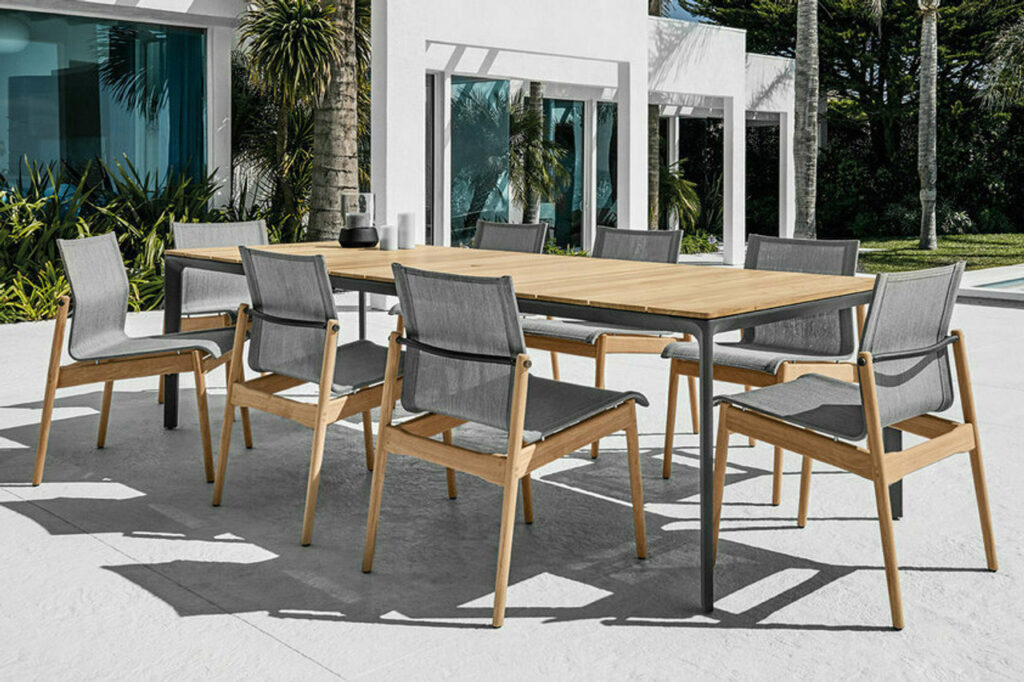
While performing regular maintenance on your luxury furniture is a must, it’s also important to note that you may need to perform seasonal maintenance from time to time. Here’s a step-by-step guide on how to perform seasonal maintenance to prolong the life of your luxury furniture:
SPRING
- Dusting and cleaning: Start the season by thoroughly dusting your luxury furniture using a soft cloth or duster. Clean all surfaces using appropriate cleaning products. This helps remove winter debris and prepares your furniture for the upcoming season.
- Upholstery care: Vacuum fabric upholstery to eliminate any accumulated dust and dirt. Consider professional upholstery cleaning if necessary. For leather upholstery, wipe your luxury furniture down with a damp cloth and apply a leather conditioner to maintain its suppleness.
- Check outdoor furniture: If you have luxury outdoor furniture, inspect it for any damage caused by winter weather. Clean outdoor furniture thoroughly and replace any worn-out cushions or covers. Apply a protective sealant or wax to maintain the integrity of the materials.
SUMMER
- Protection from sunlight: Shield your luxury furniture from direct sunlight, especially if it’s positioned near windows or in outdoor areas. Use blinds, curtains, or UV-protective window films to minimize the impact of sunlight on upholstery and wood finishes.
- Air circulation: Ensure proper air circulation around your furniture, both indoors and outdoors. Good airflow helps prevent moisture buildup and minimizes the risk of mold or mildew growth. Avoid placing furniture too close to walls or obstructing vents.
- Outdoor furniture care: Clean outdoor furniture regularly to remove dirt, dust, and pollen. Wipe down surfaces and cushions and spot clean as needed. Consider using weatherproof covers during periods of heavy rain or not when in use.
AUTUMN/FALL
- Moisture control: As humidity levels may fluctuate during fall, monitor and maintain appropriate humidity levels to prevent wood furniture from warping and cracking. Use dehumidifiers if necessary.
- Protection from temperature changes: As temperatures drop, ensure your indoor environment is adequately heated. Avoid exposing the furniture to extreme temperature variations or placing it near sources of heat that may dry out the wood or cause upholstery damage.
WINTER
- Protection from cold and moisture: Ensure your luxury furniture is positioned away from cold drafts and protected from moisture. Avoid placing it near windows, doors, or areas prone to condensation. Use humidifiers to prevent the air from becoming too dry and causing damage.
- Upholstery care: Spot-clean any stains on fabric upholstery promptly. Check for signs of mold or mildew and address them immediately if detected. For leather upholstery, moisturize it periodically to prevent it from drying out in the dry, winter air.
- Care for wooden furniture: Wood is susceptible to changes in humidity, so maintaining a stable environment is crucial in the winter months. Avoid placing hot objects directly on wooden surfaces, as this can cause damage. Use coasters, trivets, or tablecloths for protection.
Remember to adapt these maintenance practices based on your specific furniture materials, manufacturer recommendations, and climate.
Best Practices for Storing Luxury Furniture
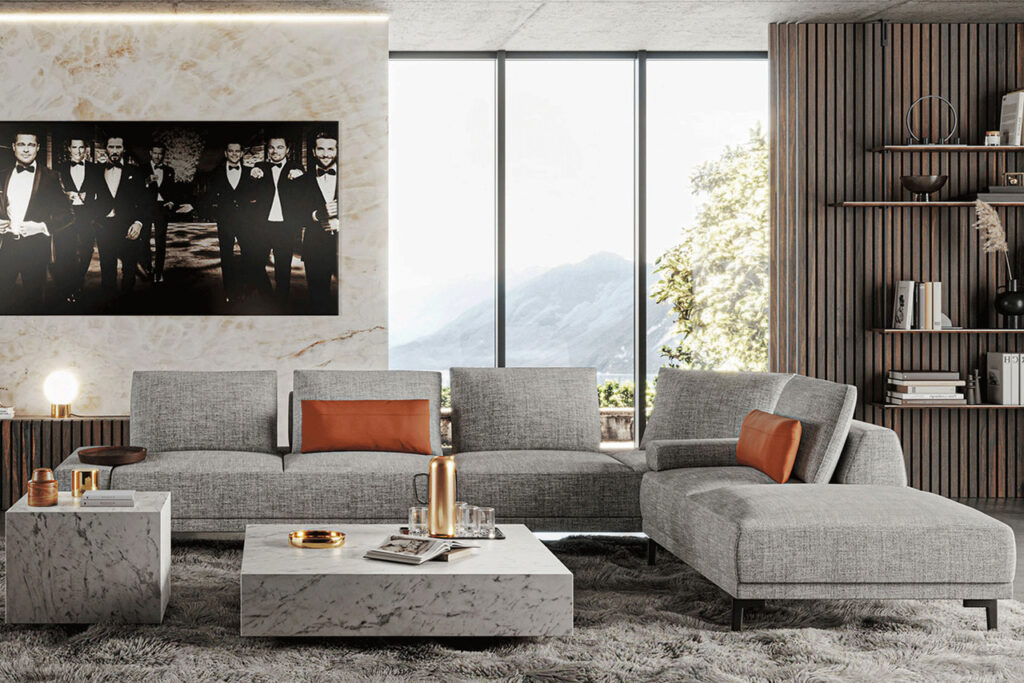
When it comes to storing luxury furniture, it’s essential to take extra care to preserve its quality and appearance. Here are some best practices to consider:
Clean and prepare your furniture. Thoroughly clean and polish your furniture before storage. Remove any dust, dirt, or stains using appropriate cleaning products recommended for the specific materials. Make sure the furniture is completely dry to prevent mold or mildew growth during storage.
Disassemble if necessary. If the furniture can be disassembled easily, take it apart carefully. This can help save space and reduce the risk of damage during storage. Keep track of all the components and hardware to ensure easy reassembly later. Pro tip: For smaller hardware, place them in a Ziploc bag and tape it to one of the disassembled pieces for peace of mind.
Wrap and protect. Use high-quality wrapping materials to protect the furniture from scratches, dents, and moisture. Consider using furniture blankets, bubble wrap, or moving pads. Wrap delicate surfaces like glass or mirrors with protective film or cardboard.
Use climate-controlled storage. Luxury furniture is often sensitive to temperature and humidity changes. Opt for a climate-controlled storage unit that maintains a consistent environment, preventing extreme temperature fluctuations and humidity levels. This will help preserve the furniture’s integrity and prevent damage caused by moisture, warping, or cracking.
Elevate your furniture. Place furniture on pallets or boards to keep it off the floor. This provides an additional layer of protection against moisture and potential pests.
Avoid direct sunlight. If storing the furniture in a room with windows, ensure that it is not exposed to direct sunlight. Prolonged exposure to sunlight can fade and damage the furniture’s upholstery or wood finishes.
Arrange carefully. When storing multiple pieces of furniture, arrange them in a way that minimizes the risk of damage. Avoid stacking heavy items on top of delicate pieces and leave enough space between them to prevent accidental collisions.
Regularly check and maintain. Periodically check on your stored furniture to ensure its condition. Look for signs of pests, mold, or any damage that may require immediate attention. Maintain a clean storage area and address any issues promptly.
Properly document and label. Keep an inventory of the furniture being stored and label each item appropriately. This will make it easier to locate specific pieces when needed and prevent any accidental mishandling during retrieval.
Insurance coverage. Consider obtaining insurance coverage for your luxury furniture while it is in storage. This provides an added layer of protection against unforeseen events such as theft, fire, or natural disasters.
Professional Furniture Cleaners & Maintenance Services
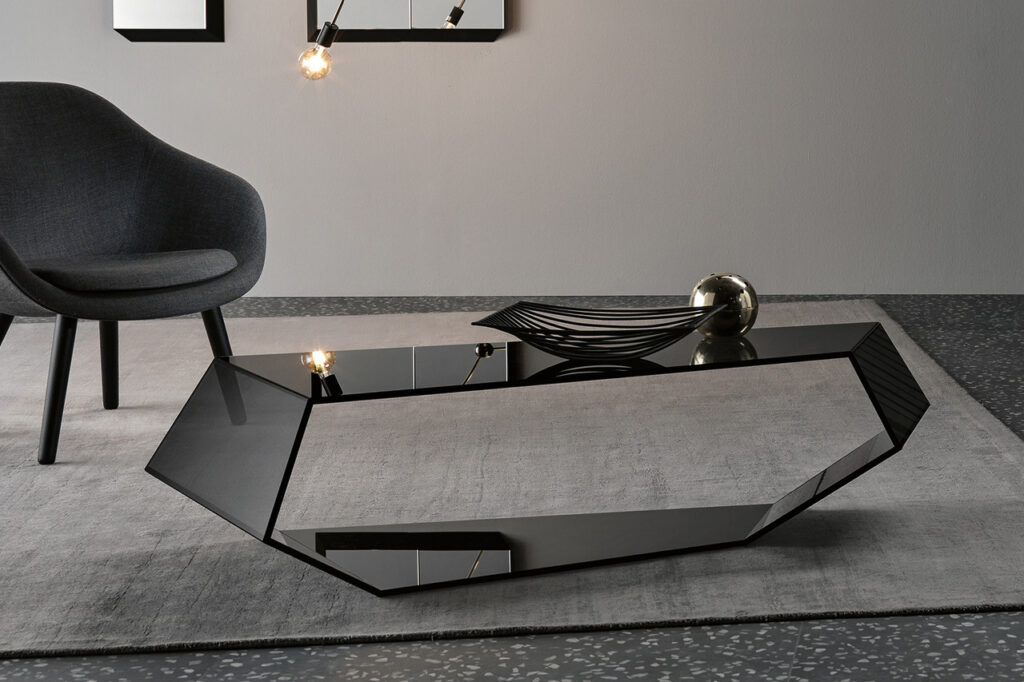
To ensure proper care for your luxury furniture, here’s a guide on when and how to contact professional furniture cleaners and maintenance services:
1. Determine the need. Assess the condition of your luxury furniture and identify any specific issues that require professional attention. Consider factors such as stains, spills, accumulated dirt, wear and tear, or if it’s been a while since your last maintenance service.
2. Research and select a reputable service provider. Look for professional furniture cleaners and maintenance services with a good reputation and positive customer reviews. Seek recommendations from friends, family, or your interior designer at Cantoni. Ensure that the service provider specializes in luxury furniture cleaning and has experience handling similar materials and finishes.
3. Request a consultation. Contact the selected service provider to request a consultation. During the consultation, describe your furniture, its condition, and any specific issues you wish to address. The service provider will likely ask for details such as the type of furniture, materials used, and dimensions.
4. Obtain a cost estimate. Based on the consultation, the service provider will provide you with a cost estimate for the cleaning and maintenance services required. They may also suggest a suitable schedule for recurring maintenance, depending on your furniture’s needs.
5. Schedule the service. If you’re satisfied with the cost estimate and proposed schedule, finalize the appointment with the service provider. Coordinate a date and time that works for both parties. Keep in mind that some providers have busy schedules, so it’s best to plan ahead and book the service in advance.
6. Prepare your furniture. Prior to the scheduled service, prepare your furniture accordingly. Clear the area around the furniture to allow easy access for the cleaning team. Remove any valuable or delicate items from around the furniture or its vicinity. If there are any specific instructions provided by the service provider, follow them carefully.
7. Supervise or provide access. Depending on your preference and comfort level, you can choose to supervise the cleaning process or provide the service provider with access to your home or premises. Ensure someone is available to grant access if you won’t be present during the service.
8. Post-service inspection. After the cleaning and maintenance service is completed, inspect your furniture to ensure it meets your expectations. Address any concerns or issues with the service provider promptly.
Remember to keep records of the service, including any recommendations provided by the professionals to guide you in further maintenance and care.
Conclusion
At Cantoni, we want your luxury furniture to last you for many years. Regular care and maintenance are an essential part of ensuring that your furniture looks its best. By dedicating attention to its upkeep, you can safeguard your furniture against wear, damage, and deterioration. Moreover, proper care and maintenance demonstrate a sense of pride and appreciation for the craftsmanship and investment made in acquiring your luxury furniture. We hope that these helpful tips and tricks will make keeping a clean home easier so that you can enjoy your investment and all the benefits that come along with it.
Be sure and follow us on social media to stay up-to-date on what’s new and hot in modern design:
To learn more about Cantoni, contact us at info-email@cantoni.com or call 325.244.1469 to be connected to your nearest Cantoni store.
